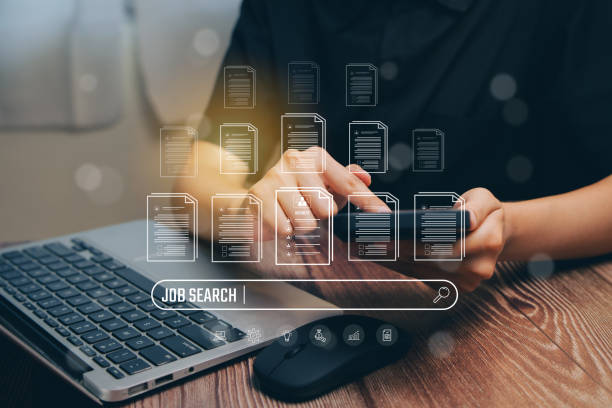Understanding On-Page SEO: The Most Essential Step for Visibility

In today’s highly competitive digital world, gaining visibility among a multitude of websites has become more important than ever.
One of the most powerful tools to achieve this goal is On-Page SEO.
But what exactly is On-Page SEO? And why is it so crucial?
On-Page SEO, or On-Page Optimization, refers to a set of actions you perform directly on your website to improve its ranking in search engine results pages (SERPs).
These actions include optimizing content, site structure, and HTML codes.
The main goal of this #optimization is to help search engines like Google better understand your page’s content and, through this, provide the most relevant results to users.
Suppose you offer the best product or service, but if search engines cannot properly identify and rank your website, how will target users find you? On-Page SEO fills this gap. This approach not only helps increase rankings but also improves user experience (UX).
A website with strong On-Page SEO has high loading speed, provides easy navigation, and offers quality content relevant to user needs.
Internal site optimization is the foundation of any successful SEO strategy.
Without a solid foundation in On-Page SEO, even the best Off-Page SEO strategies cannot achieve desired results.
This part of SEO gives you more control, as all changes are applied directly to your site.
Therefore, learning and correctly implementing On-Page SEO principles is an unavoidable necessity for any business seeking online growth.
This comprehensive guide will familiarize you with all aspects of this vital process.
How much does losing business leads due to an unprofessional website cost you? Solve this problem forever with professional corporate website design by Rasawob!
✅ Increase credibility and trust among potential customers
✅ Easier acquisition of new business leads
⚡ Get a free consultation now!
Keyword Research: The Backbone of On-Page SEO
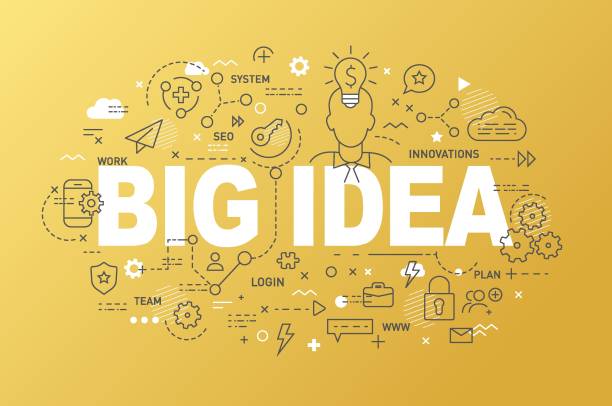
One of the most fundamental steps in any successful On-Page SEO strategy is comprehensive and accurate keyword research.
Keywords are essentially the phrases that users enter into search engines to find information, products, or services.
Choosing the right keywords helps you create content that precisely matches the needs and search intent of your target audience.
This is a specialized step that requires deep insight into the market and audience.
To start, don’t just think about general and highly competitive keywords.
Long-Tail Keywords, which include three or more words, often have higher conversion rates and less competition.
For example, instead of “SEO,” use “best On-Page SEO methods for small businesses.”
These types of keywords indicate a more specific search intent.
Keyword research tools like Google Keyword Planner, Ahrefs, Semrush, and KWFinder can be of great help in this process.
These tools show you search volume, competition level, and related keywords.
After compiling a list of keywords, you should prioritize them based on relevance, search volume, and ranking difficulty.
The important point in improving On-Page SEO is to use keywords naturally and organically in your content.
Avoid excessive keyword repetition (Keyword Stuffing), as this not only harms your ranking but also reduces user experience.
Keywords should be placed in the title, meta description, headings, body content, and even in image filenames.
Finally, keyword research is an ongoing process.
Search trends and user behavior are constantly changing, so reviewing and updating your keyword list periodically is essential for maintaining your position in On-Page SEO and staying ahead of competitors.
This section is vital guidance for ensuring success in future searches.
Optimizing Title Tags and Meta Descriptions for User Attraction

The Title Tag and Meta Description are the first things users see about your website in the Search Engine Results Pages (SERP).
These two elements are not only vital for On-Page SEO but also play a decisive role in your Click-Through Rate (CTR).
The title tag is a direct ranking factor that tells search engines what your page’s content is about, while the meta description has more of an explanatory and promotional aspect.
To optimize the title tag, ensure your main keyword is placed at the beginning of it.
The title should be engaging, concise, and accurately reflect the page’s content.
The appropriate length for a title tag is between 50 and 60 characters so that it appears fully in search results and is not truncated.
For example, if your keyword is “On-Page SEO tutorial,” a title like “Comprehensive On-Page SEO Tutorial: Step-by-Step Guide for Beginners” can be very effective.
| SEO Element | Description | Optimization Tips |
|---|---|---|
| Title Tag | Clickable title in search results |
|
| Meta Description | Short text below the title in search results |
|
Although the meta description is not a direct ranking factor, it significantly impacts the click-through rate.
This section is an opportunity to persuade the user to click on your link.
The meta description should include the main keyword or its synonym, provide an engaging summary of the page’s content, and include a Call to Action (CTA) like “Read More” or “Shop Now.”
The ideal length for a meta description is around 150 to 160 characters.
Ultimately, optimizing these two elements not only helps search engines better understand your page but also directly affects user experience and their willingness to visit your site.
This section is a key tutorial in your On-Page SEO strategy.
URL Structure and Its Optimization in On-Page SEO
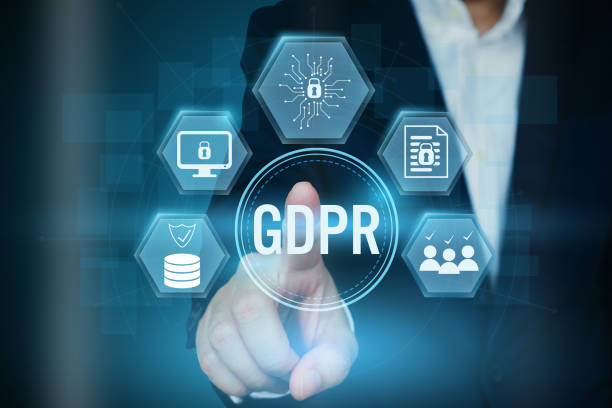
The URL structure, or web address of your website’s pages, is an element often overlooked in On-Page SEO discussions, yet it plays a significant role in ranking and user experience.
An optimized URL is not only more understandable for search engines but also helps users know the page’s content before clicking.
This section is a practical guide for optimal address structuring.
The first principle in URL optimization is its brevity and simplicity.
Short and readable URLs are more appealing to users and are more easily crawled and indexed by search engines.
Use keywords relevant to the page’s content in your URL.
This signals to search engines what your page is about and helps increase its relevance to user searches.
For example, instead of a URL like “www.example.com/page?id=12345&category=seo,” an optimized URL could be “www.example.com/on-page-seo/complete-guide.”
You can see that the second URL includes keywords and has a hierarchical and understandable structure.
Key tips for URL structure in internal site optimization:
- Use keywords: Include the page’s main keywords in your URL.
- Be short and readable: Avoid long and complex URLs.
- Use hyphens (-): Use hyphens to separate words in the URL, not underscores (_).
Search engines recognize hyphens as word separators, while they usually ignore underscores. - Remove extra characters: Avoid numbers, punctuation marks, and unnecessary characters in the URL.
- Consistency: Use a consistent URL structure throughout your website to be predictable for both users and search engine crawlers.
A proper URL not only helps with On-Page SEO but also performs more effectively when sharing content on social networks and other platforms, as its readability is higher.
This is an important explanatory section that can significantly impact your overall SEO performance.
Does your company website perform as well as your brand deserves? Or does it scare away potential customers?
Rasawob, specialists in professional corporate website design, is your comprehensive solution.
✅ A modern, beautiful website tailored to your brand identity
✅ Significant increase in lead and new customer acquisition
⚡ Contact Rasawob now for a free corporate website design consultation!
Producing Quality Content and Its Impact on On-Page SEO
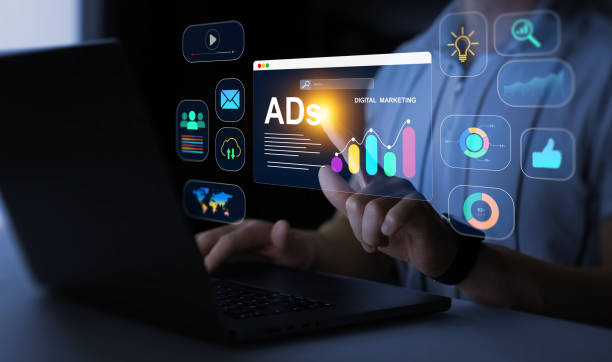
Content is king; this phrase holds more true than ever in the world of SEO, especially in the realm of On-Page SEO.
Producing high-quality, valuable, and engaging content is the core of any successful search engine optimization strategy.
Your content must not only be understandable to search engines but, more importantly, it must fully address the needs and questions of users and provide them with real value.
This is a specialized area that requires a deep understanding of the audience.
To produce quality content, you must first understand the User Intent.
Is the user looking for information (Informational), intending to buy (Commercial), or trying to access a specific website (Navigational)? Your content must align with this intent.
For example, if a user is searching for “best smartphones 2024,” your content should be a comprehensive list with reviews, not just a product sales page.
The depth and comprehensiveness of content are also of high importance.
Your content should cover all aspects of the topic and answer all potential user questions.
This signals to search engines that your page is a credible and comprehensive resource.
Use appropriate headings (H1, H2, H3…) to structure your content.
This not only improves content readability for users but also helps search engines understand the hierarchy and main topics of the page.
Engaging content can involve users and increase their dwell time on your site.
This type of content, in addition to answering questions, can generate new questions in the user’s mind and encourage more interaction.
Finally, content reliability and credibility (E-A-T: Expertise, Authoritativeness, Trustworthiness) are also very important factors for Google.
Ensure that your content is written by experts, cites credible sources, and provides accurate and up-to-date information.
On-Page SEO with strong content turns your website into an authority in its field.
Image Optimization for Enhancing On-Page SEO
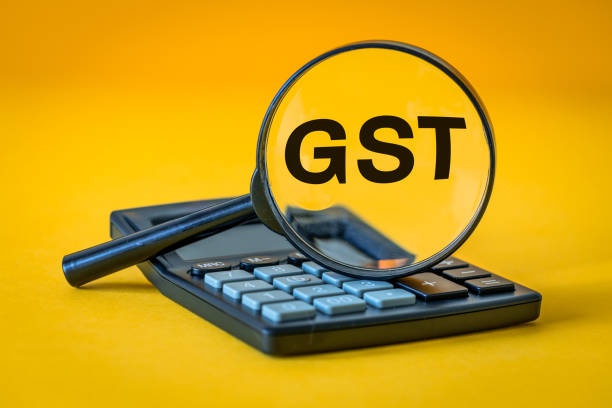
Images play a very important role in a website’s visual appeal and user experience, but their importance in On-Page SEO is often overlooked.
Optimizing images not only helps improve your ranking in image search results but also increases page loading speed and enhances the overall user experience.
This is an explanatory and practical section.
The first step in image optimization is choosing the right format and compressing them.
Formats like WebP are excellent options due to their high compression while maintaining quality.
Also, reduce the size of images as much as possible before uploading them.
Many online tools and WordPress plugins are available for compressing images without significant quality loss.
Website loading speed is a crucial factor in On-Page SEO, and unoptimized images can severely reduce your site’s speed.
Using Alt tags (alternative text) for images is particularly important.
An Alt tag is a text description for an image that is displayed if the image fails to load and is also essential for visually impaired users who use screen readers.
Most importantly, Alt tags help search engines understand the image content.
Ensure your Alt tag is descriptive and includes relevant keywords, but avoid keyword stuffing.
For example, for an image of “On-Page SEO tutorial,” the Alt tag could be “Image showing step-by-step On-Page SEO tutorial.”
In addition to the Alt tag, optimize the Image Filename as well.
Instead of names like “IMG_001.jpg,” use descriptive names that include keywords, such as “on-page-seo-tutorial.jpg.”
Other tips include image dimensions (the actual image size should be proportionate to its display space on the site) and using lazy loading, which ensures images are only loaded when the user scrolls to the relevant section, helping to improve initial page loading speed.
This is a specialized guide for improving your On-Page SEO.
The Role of Internal and External Links in Improving On-Page SEO

Link building, both internal and external, forms the backbone of the web’s spider network and plays a vital role in On-Page SEO and site ranking.
Internal Links refer to pages within your own website, while External Links refer to other websites.
Understanding and correctly using both types of links are essential for improving On-Page SEO.
| Link Type | Usage | Impact on On-Page SEO |
|---|---|---|
| Internal Link | Linking to other pages within the same website |
|
| External Link | Linking to other websites |
|
Internal links help search engines better understand your website’s structure and discover and index different pages.
They also transfer “page authority” (Link Juice) between different pages.
A strong and logical internal link structure encourages users to stay on your site longer and view more pages, which is a positive signal for search engines.
Use descriptive and keyword-relevant Anchor Text in your internal links.
On the other hand, external links (Outbound Links) to credible and relevant websites can help increase your website’s credibility and trustworthiness.
Google views websites that link to reputable sources as more reliable.
For example, if you are writing about “On-Page SEO,” linking to an article from Google or a credible SEO resource like Moz or Ahrefs not only provides your users with more information but also signals to Google that your content is well-researched and trustworthy.
Finally, the balance between internal and external links is crucial.
Both play complementary roles in your On-Page SEO strategy and help search engines properly evaluate your content.
This section provides an in-depth analysis for optimizing link building.
Site Loading Speed and User Experience from an On-Page SEO Perspective
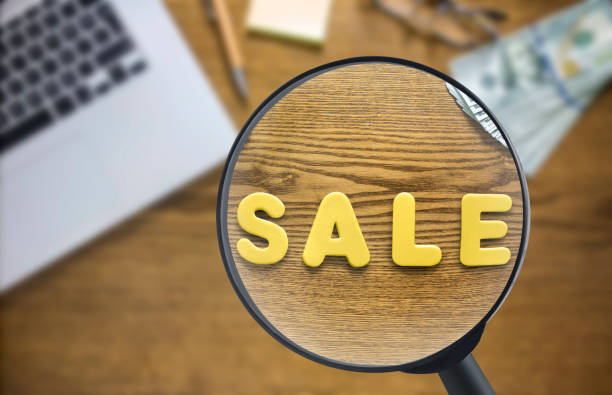
In today’s fast-paced world, website loading speed and User Experience (UX) have become critical factors in On-Page SEO.
Google has repeatedly emphasized that site speed, especially through Core Web Vitals, is an important ranking factor.
Today’s users have high expectations, and even a few seconds’ delay in page loading can lead to lost visitors and reduced conversion rates.
This is important news and a fundamental analysis.
Core Web Vitals comprise three main metrics: LCP (Largest Contentful Paint), which measures the loading time of the largest content element; FID (First Input Delay), which assesses the browser’s responsiveness to the user’s first interaction; and CLS (Cumulative Layout Shift), which examines the visual stability of the page.
Improving these metrics directly helps enhance your On-Page SEO.
There are numerous ways to improve site loading speed.
The first step is image optimization, as mentioned earlier.
Using caching can also significantly increase the loading speed of repeated pages.
Optimizing code (CSS, JavaScript, HTML) by compressing and removing unnecessary code, as well as using a CDN (Content Delivery Network) to deliver content from the closest server to the user, are other effective solutions.
User experience is not limited to speed alone.
Responsive Design, which correctly displays your website on any device including mobile, tablet, and desktop, is of great importance.
Given Google’s Mobile-First Indexing approach, having a mobile-friendly site is no longer an option but a necessity for On-Page SEO.
Easy navigation and a logical site structure also contribute to improving user experience.
Users should be able to easily find the information they need and not get lost on your site.
Using clear Call to Actions (CTAs), easy contact forms, and attractive visual design all help increase user satisfaction and, consequently, send positive signals to search engines.
Ultimately, focusing on continuous speed and UX improvement is vital for success in On-Page SEO.
Does your current website adequately represent your brand’s credibility? Or does it scare away potential customers?
Rasawob, with years of experience in professional corporate website design, is your comprehensive solution.
✅ A modern, beautiful website tailored to your brand identity
✅ Significant increase in lead and new customer acquisition
⚡ Contact Rasawob now for a free corporate website design consultation!
Reviewing and Analyzing On-Page SEO Performance with Tools
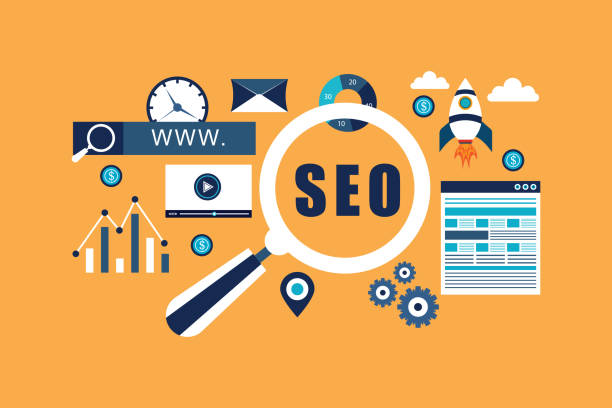
After implementing On-Page SEO strategies, the next and very crucial step is monitoring and analyzing performance.
Without a precise review of data, you cannot understand which actions were effective and which need further optimization.
Fortunately, powerful tools are available to help you analytically and expertly review your On-Page SEO performance.
Google Analytics and Google Search Console are two free and essential tools provided by Google.
Google Analytics gives you a comprehensive view of user behavior on your site: how many people visited your site, where they came from, which pages they viewed, and how long they stayed on your site.
This information helps you identify potential issues in user experience or content.
Google Search Console (formerly Webmaster Tools) is a tool directly related to how Google views your site.
This tool shows you which keywords your site has ranked for, which pages have indexing issues, and if there are any Crawl Errors.
The Core Web Vitals report in Search Console is also very useful for evaluating the speed and visual stability of your pages.
In addition to Google’s tools, there are also powerful paid tools like Ahrefs, Moz, and Semrush that offer more advanced capabilities for competitor analysis, keyword research, and backlink monitoring.
These tools can help you discover new opportunities to improve On-Page SEO.
Regularly reviewing reports and data allows you to optimize your On-Page SEO strategies.
If you notice that a particular page has a high bounce rate or low dwell time, it may require content revision or loading speed improvement.
This continuous learning and analytical process is the key to sustainable success in SEO.
Challenges and Future of On-Page SEO in the Digital World

The world of SEO, especially On-Page SEO, is constantly changing and evolving.
What is considered best practice today might change tomorrow with new search engine algorithm updates.
Understanding current challenges and predicting future trends is crucial for maintaining a competitive position in this field.
This section provides an in-depth and somewhat entertaining analysis of the future of SEO.
One of the biggest current challenges is the continuous changes in Google’s algorithms.
Google implements hundreds of daily and thousands of annual updates to its algorithms, some of which can have significant impacts on rankings.
This requires SEO professionals to constantly learn and update their knowledge.
The emergence of Artificial Intelligence (AI) and Machine Learning has also created new challenges and opportunities for On-Page SEO.
Algorithms like RankBrain, BERT, and MUM help Google understand search intent with greater accuracy and provide more relevant content.
This means that producing truly valuable and semantic content has become more important than mere keyword stuffing.
Voice Search and Visual Search are also growing and changing how users interact with search engines.
Optimizing for these types of searches, which usually involve longer, conversational, and question-based phrases, is a growing trend in On-Page SEO.
Furthermore, the focus on User Experience (UX) and E-A-T (Expertise, Authoritativeness, Trustworthiness) has increased more than ever.
Google aims to provide the best possible experience to users, and websites that adhere to these principles will be rewarded.
The future of On-Page SEO is moving towards a more comprehensive and human-centric approach.
Mere technical optimization is no longer sufficient; instead, one must continuously produce quality content, improve user experience, and keep pace with the latest algorithmic changes.
This is an expert and complex path, but with the right approach, success is attainable.
Frequently Asked Questions
| No. | Question | Answer |
|---|---|---|
| 1 | What is On-Page SEO? | On-Page SEO refers to a set of actions performed within a website to optimize its pages and achieve a better ranking in search results. |
| 2 | What is the most important factor in On-Page SEO? | High-quality, relevant, and comprehensive content that addresses user needs is the most important factor in On-Page SEO. |
| 3 | What role does the Title Tag play in On-Page SEO? | The title tag is one of the most important factors that tells search engines and users what the page content is about. It should include the main keyword and be engaging. |
| 4 | How important is the Meta Description tag? | Although it does not directly affect ranking, it is highly effective on the Click-Through Rate (CTR) in search results and encourages users to visit the page. |
| 5 | How is image optimization done in On-Page SEO? | By using proper alt tags, compressing image size for faster loading, and meaningful image filename naming. |
| 6 | What is the importance of using headings (H1, H2, H3) in On-Page SEO? | Headings help structure content, increase readability, and assist search engines in understanding the hierarchy and sub-topics of the content. |
| 7 | What does Internal Linking mean and what are its benefits? | Internal linking means creating links between different pages of a website. This helps with distributing authority, improving user navigation, and assisting search engine crawling. |
| 8 | Where should the Focus Keyword be placed on the page? | The main keyword should be placed in the title tag, meta description, H1, first paragraph, and naturally throughout the text and, if possible, in the URL. |
| 9 | What impact does copied or duplicate content have on On-Page SEO? | Duplicate content can harm site rankings and confuse search engines about which version is original, potentially leading them to flag it as spam. |
| 10 | How important is page loading speed in On-Page SEO? | Page loading speed is an important ranking factor and directly impacts user experience. Slow pages lead to increased user bounce rates. |
And other services of Rasawob Advertising Agency in the field of advertising
Smart SEO: A fast and efficient solution for campaign management with a focus on precise audience targeting.
Smart Brand Identity: An innovative platform for improving customer acquisition through intelligent data analysis.
Smart Customer Journey Map: A dedicated service for increasing website traffic growth based on marketing automation.
Smart UI/UX: A fast and efficient solution for customer attraction focusing on attractive user interface design.
Smart Website Development: A dedicated service for increasing click-through rates based on real data utilization.
And over hundreds of other services in the field of internet advertising, advertising consultation, and organizational solutions
Internet Advertising | Advertising Strategy | Advertorial
Resources
Comprehensive Guide to On-Page SEO
On-Page SEO Tutorial
Why is On-Page SEO Important?
Website Optimization for Search Engines
? To propel your business to new heights in the digital world and reach the pinnacles of success, Rasawob Afarin Digital Marketing Agency is by your side with innovative services including website design with a modern user interface, SEO, and advertising campaign management, ensuring a powerful and lasting online presence.
📍 Tehran, Mirdamad Street, next to Bank Markazi, Southern Kazeroon Alley, Ramin Alley, No. 6

